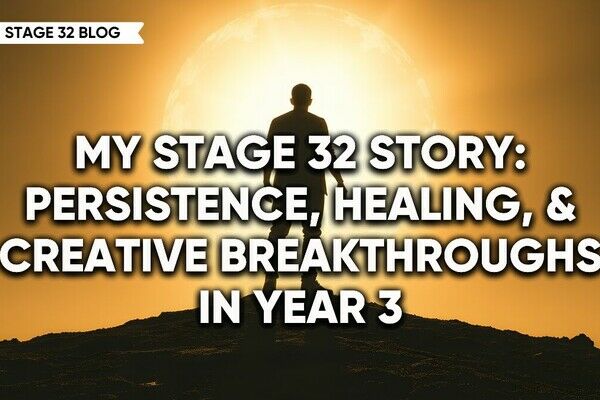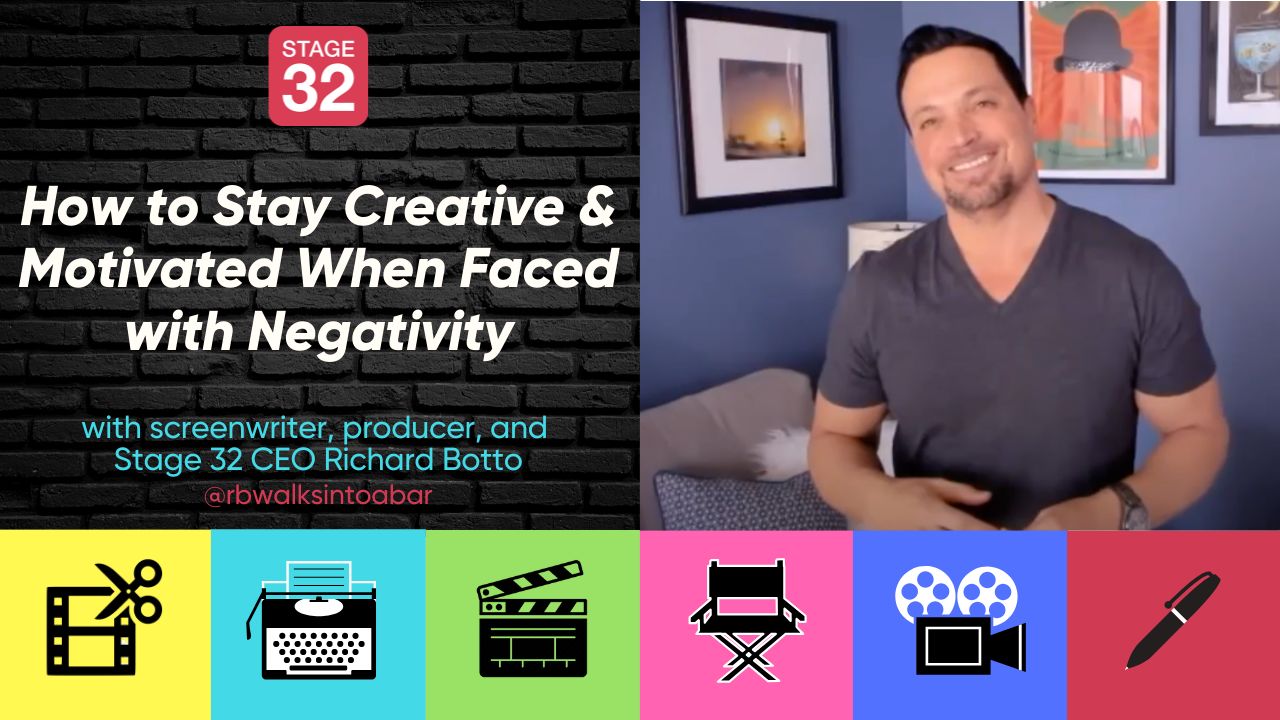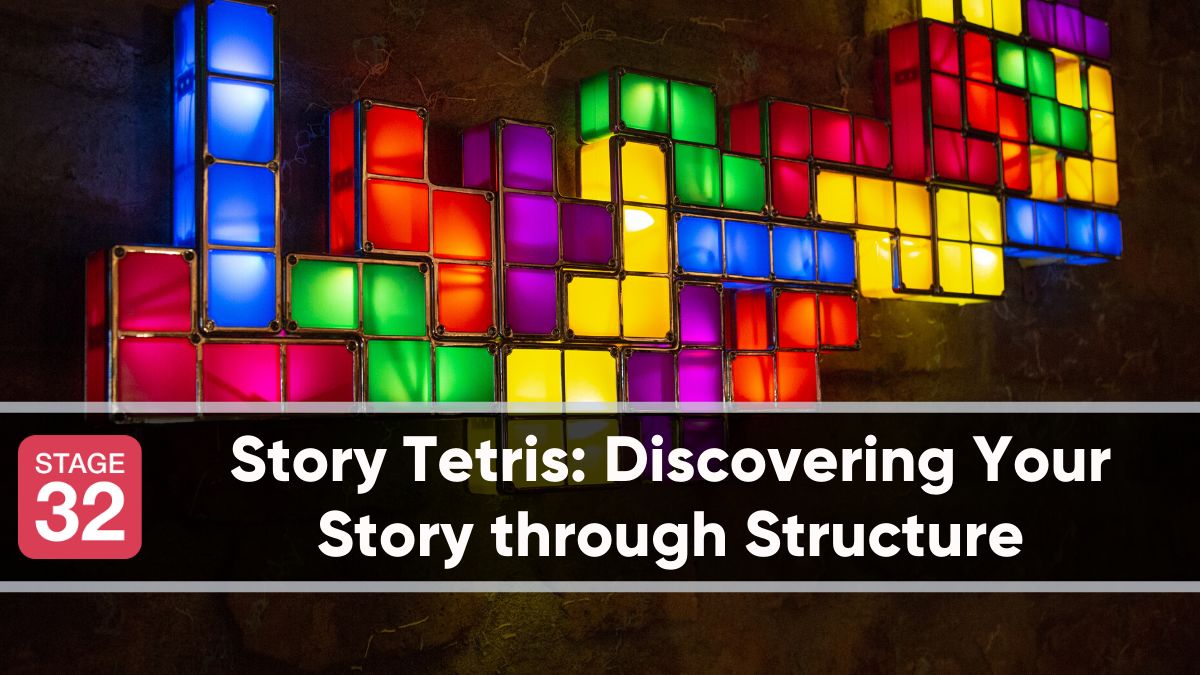Story Tetris: Discovering Your Story through Structure
I have a confession to make. I’m a Tetris addict.
Thinking fast to fit those little blocks together with no gaps -- it is such a satisfying challenge. I love M.C. Escher and Mandelbrot fractals and the mathematics of the golden ratio for the same reason: the precision and manipulation of form.

Maybe it’s because my dad is a software engineer and he introduced me to flow diagrams when I was like seven years old, but to me, there’s nothing quite as exquisite as the beauty and elegance of good design -- whether it’s a computer program or a skyscraper or a screenplay.
In my other life as a literature professor, I love teaching courses that combine explorations of the long and short-form narrative. I always ask my students how it is that a lyric poet or a short story writer can capture a theme in a dozen lines or a dozen pages that takes an epic poet or a novelist hundreds of lines or hundreds of pages to express.
There is an inseparable relationship between story and structure -- and it’s important that the story you tell fits the medium you choose. That’s part of the principle of elegant design. That said, there is so much we can learn by playing with form and using the parameters of structure to explore what we want to say.
The Medium is a Harsh Mistress
On a recent episode of my Subject Matter Expert podcast, I asked Shanee Edwards, award-winning screenwriter and author of the novel Ada Lovelace: The Countess Who Dreamed in Numbers, about her experience taking the Ada Lovelace story from feature to TV series to novel.
She told me that she had to adjust what she emphasized in order to fit the demands of these different mediums. She said that she was surprised about the extent of the build-out required to tell the story as a novel, and noted that writing the same concept for TV made her more aware of the edgier and darker side of her characters.
Her experience echoes my own as a novelist-turned-screenwriter and a story coach. The process of compression and expansion that is required to shift a story from TV to feature to novel or vice versa isn’t simply a matter of chopping bits out or sticking bits in. We’re not trying to create Frankenstein’s monster here. These manipulations have to be full and total transformations in order to be successful.
So what can you learn by taking your story concept through these structural transformations? Let’s explore the demands of each medium and see.

Detail: Novel Transformation
Back in December, I attended a screenwriting conference, and a literary agent on one of the panels offered some interesting advice. He said that writing a concept as a novel first would yield a far deeper grasp of the world and the characters than you would get by simply moving straight into the screenplay.
As a novelist-turned-screenwriter myself, this advice really resonated with me. Novels require you to work on an extraordinary level of detail. You have to provide everything your reader needs to imagine the world. This goes beyond researching what kind of fabric royalty would wear in the 2nd century C.E. (though it is that too). Really brilliant prose writing is synaesthetic: it gives you a total sensory experience that transports you into the other world of the narrative.
So that’s the first thing this transformation can teach you about your story: it can help you identify the sensory details and precise images that will help you capture your world.

Because of their expansiveness, novels also allow you to delve fully into character arcs and relationships. Minor characters get more “page time” and you can build out all the little moments that reveal character.
When you cut the 400-page novel back down to a 90-page feature, most of that will go, of course. But the moments you decide to keep, if you’re making smart choices, should be like cut diamonds: precise, powerful, and beautiful.
Novels also give you the chance to explore the internal voice of your various POV characters. The ability to explore and reveal your characters’ thoughts and reactions gives you a deeper understanding of your characters on a psychological level (because you’ve written their thoughts and most secret desires). Again, all this internal material has to go when you move into Final Draft, but knowing the characters inside and out means you’ll more precisely capture their external expressions.
Chemistry: TV Transformation
I recently coached a screenwriter who wanted to take her feature-length script and turn it into a TV pilot. As we worked through her concept and the material she’d already developed, I noticed a particular set of challenges. I saw a similar set of challenges with a writer who was turning her novel into a TV series, and I’m experiencing them myself as I work on adapting a novel into a limited series.
Transforming long-form narrative (either novels or features) into TV material is not as simple as hacking the length down by a third (or more). If you just take pieces out, the thing that was a coherent whole will be mutilated beyond recognition. And while the pilot may represent a compression, the series itself requires expansion. If you simply consolidate a feature script down into a pilot, you don’t have anywhere for the series to go.

So, working within the TV medium will help you to see your concept both as a self-contained story arc and as an expansive “story generation” engine. Understanding the relationship of part to whole is also a gift of working in this medium; the pilot has its own arc, but it is only the beginning of the much larger arc of the season.
No matter which medium you’re working in, the engine of the plot is character. The combination, recombination, and collision of flawed characters whose drives, needs, and choices spiral us into a corkscrew of almost unbearable tension before finally resolving--that’s plot.
Developing a concept for TV requires you to design characters (and character relationships) who can sustain this kind of bombardment and hold an audience’s interest over a season or three or, in the case of a show like Doctor Who, 50. Characters in TV tend to be sharply drawn, with clearly defined traits that govern their responses, and which naturally put them into conflict with other sharply drawn characters with clearly defined traits.
Crowding them together in the crucible of an hour-long drama or a half-hour comedy is what makes TV so explosive. Playing in this medium gives you the chance to hone in on your characters’ core drivers and natural antagonists so that every scene in your novel or feature can crackle with energy.
The expansive aspect of the TV series, like the expansiveness of a novel, gives you the chance to build out your world to create an immersive experience the audience will want to return to again and again. Your choice of world impacts the story options available to you, so this is a great exercise for testing your story arena. As a simple example, a police procedural set in Hawaii will have a different set of story possibilities than a similar type of show set in Las Vegas.
Finally, running a concept through the parameters for TV writing helps you to explore the possibilities of set-ups and payoffs. These are the little threads that help to unify the serialized aspects of a show, the little bits of mystery that keep the audience engaged. The pacing of reveals can make or break a series, so working in this medium and learning to master this technique will only help you elsewhere.

Economy: Feature Transformation
A few months ago, I worked with a writer who had written a short film and was looking to expand it to a feature. She’d gotten the page count up to a respectable length, but now there was very little movement in the story. This is because expansion without transformation is like overinflating a balloon -- it just takes up more space.
Moving from a short film or TV pilot to a feature gives you the opportunity to write more expansively, but scenes shouldn’t just be packed with what amounts to filler -- they still need to be tight and powerful, weaving in additional situations that reveal character and build conflict.
If you’re expanding from a shorter-form narrative and 90 pages feels incredibly long, that’s a good indicator that you can invest in more development work, particularly on character and relationships. Remember, no matter the medium, the core driver of plot is character.
In the ancient and medieval arts of poetry, expansion was celebrated as one of the ways an author could distinguish their work from the source material they drew on. It’s an artistic opportunity to set your vision apart. So whether you’re expanding a comic book superhero story or your own short film or the Book of Genesis, the material you add should make a difference to the story. This is the principle of economy in action: everything has a purpose.
Writing features is also a great proving ground for working within strict structural parameters and learning to tell a self-contained story. Taking your concept through the feature medium will help you craft precise character arcs and master the art of pacing over a longer narrative framework.
For writers used to working in long-form fiction, features represent an interesting challenge. They do the work of a novel--they cover an expansive and complex narrative terrain--but they do it in a highly compressed form. Working in the feature medium will teach you to make hard choices about character arcs, relationships, and plot; it forces you to be ruthless in your decision-making because there is no other way to fulfill the demands of clarity, audience engagement, and pacing.
As a novelist, writing features has taught me to value (and therefore question) every single word I put on the page. It is the best teacher of economy that I know. Just because a novel gives you “permission” to be expansive doesn’t mean you should be. Expansiveness should always be intentional. You write more about what matters most; you don’t just write more.

Writing is a Playground
I hope this has given you the courage to try working outside your normal “comfort zone” medium. Even if you don’t fully execute a concept as a feature or a pilot or a novel, you can use their parameters to help you in the prewriting phase or if you run into writer’s block. I promise that you’ll discover aspects of your story that you overlooked.
No matter which direction you ultimately decide to go with your project, you’ll be a better writer and it will be a better story for the time you spend exploring its possibilities. So take the risk and have some fun!
About S.K. Valenzuela

Shannon (S.K.) Valenzuela is a novelist, ghostwriter, and award-winning screenwriter. Her curiosity about pretty much everything means she loves writing research-based stories: grounded sci-fi and historical fiction are her particular playgrounds of choice at the moment, though she also loves a good science fantasy adventure.
When she’s not penning her own stories, she loves her work as a story coach and creative entrepreneur at The Story Scene. She specializes in helping new and emerging screenwriters and novelists, and she’s coached dozens of writers through their first drafts and rewrites.
She’s also the host of the Subject Matter Expert podcast, which is designed to inspire and inform sci-fi writers through interviews with scientists, thought leaders, and writers working in the genre.
In real life, she’s a university professor with a Ph.D. in Medieval Literature, so you’ll also find her in the classroom exploring the poetry of Homer and Dante. She loves teaching stories almost as much as she loves writing them.
Let's hear your thoughts in the comments below!
Got an idea for a post? Or have you collaborated with Stage 32 members to create a project? We'd love to hear about it. Email Taylor at taylor@stage32.com and let's get your post published!
Please help support your fellow Stage 32ers by sharing this on social. Check out the social media buttons at the top to share on Instagram @stage32online Twitter @stage32 Facebook @stage32 and LinkedIn @stage-32
| How to Stay Creative & Motivated When Faced with Negativity with Stage 32 CEO Richard "RB" Botto |
| When Preparation Meets Opportunity: Those That Stay Ready and Prepare During This Time Will Rise Again! |
Search Stage 32 Blog
There are now 4043 blog posts for you to enjoy. Search them all by tags below.
Acting, Advice, Cinematography, Coffee & Content, Composing, Contests, Distribution, Featured, Filmmaking, Financing, Inspirational, Networking, Producing, Screenwriting, Success Stories, Tips, Trending,Relevant Tags
Recommended Articles

Coffee & Content: Why Your Next Step Matters More Than the Perfect Step

Happy Thanksgiving From Stage 32: We Are Thankful For YOU

Coffee & Content: The Genius of Weapons and How to Know When Your Script Is Ready

4 Reasons To Have Audio Description On Your Film

Stage 32 + DramaBox Join Forces to Launch World's First Vertical Drama Incubator

Don't Let the Momentum of November Write Club Die: How to Stay Active Into 2026 & Beyond!

My Stage 32 Story: Persistence, Healing, & Creative Breakthroughs in Year 3

Stage 32 Is My Magic Key To International Networking And Education

Insider Intel: Packaging your Project- The Chicken or the Egg Dilemma






